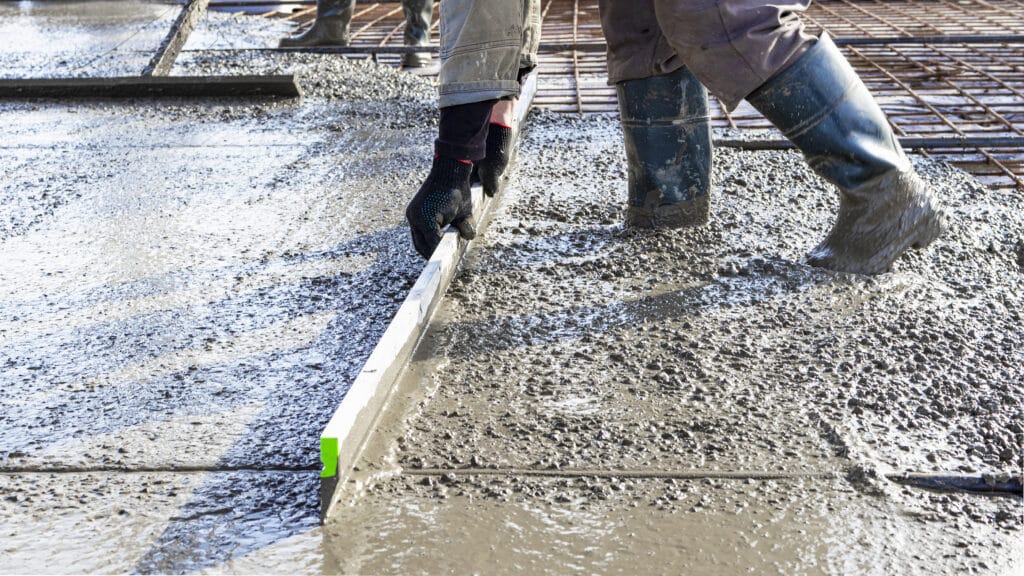It’s an economical material that requires minimal upkeep, yet can withstand natural disasters without issue.
Concrete construction reduces energy costs for homeowners while mitigating its environmental impact, using industrial waste materials like fly ash and blast furnace slag in its production process.
Durability
Concrete is highly resilient, being resistant to environmental factors like water, fire and earthquakes as well as resisting corrosion and rot, thus significantly lowering maintenance costs over the long-term.
Note that durability of concrete depends on a number of variables, including its water-cement ratio, type and dosage of cement, aggregates and admixtures; however, an appropriately designed mix can offer excellent environmental resistance.
Concrete’s ability to withstand extreme weather conditions makes it an excellent choice for buildings located in coastal regions or regions with frequent precipitation. Furthermore, its absence of organic content makes it impermeable to moisture while withstanding high temperatures; additionally it’s noncombustible material which reduces fire risks significantly in homes and offices alike; its structural integrity also provides soundproofing properties, making concrete ideal for hospitals or private practices that need to keep noise levels down for patient wellbeing.
Flexibility
Concrete is an extremely flexible material, capable of being shaped and textured to meet a range of goals without compromising its strength. Architects can utilize its versatility to craft textures like stucco-like finishes or stamped patterns that replicate bricks or stones or even decorative exposed aggregate finishes for architectural projects.
There are also a variety of additives that can be used to alter the properties of concrete, such as increasing or decreasing its setting time. Which admixture you select depends on your project needs. Concreting Melbourne has become part of our everyday lives and often goes unnoticed.
Concrete is an ideal building material from a safety standpoint because of its fire resistance, withstanding temperatures up to 910 degrees Fahrenheit without burning out. Furthermore, its soundproofing properties enable patients and hospital staff to rest easier without distraction. Furthermore, its minimal air infiltration allows easier filtration and cleaning of medical equipment as well as decreasing strain during delicate procedures performed by surgeons.
Energy Efficiency
Concrete is an effective insulator that helps regulate temperatures within buildings and thus decreases energy costs. Furthermore, its high thermal mass stores heat efficiently which lowers air conditioning expenses during summer. Furthermore, its structures do not release any gases or toxic materials – which makes them safe both for building occupants as well as the environment.
Concrete’s durability and low maintenance costs make it a cost-efficient option over the lifespan of a building, while its increased resiliency compared to wood structures helps it withstand natural disasters more readily – such as hurricanes and wildfires.
Concrete can be modified with additives to achieve special characteristics, including moisture resistance and high-temperature tolerance. Specialty concretes can be tailored specifically to project requirements; using recycled aggregates in concrete helps minimize waste while conserving resources – fly ash, slag and ground vehicle tires are great materials that can substitute some of the aggregate in concrete in order to reduce its consumption of raw materials.
Sustainability
Concrete is an eco-friendly building material, reducing its impact on natural resources and the environment while using industrial waste material and recycling waste for recycling, thus contributing to circular economies.
Concrete’s primary binder, calcium silicate hydrate, can withstand high temperatures without needing fireproofing measures, thus eliminating the need for costly fireproofing measures. Furthermore, its thermal mass helps regulate indoor temperatures to decrease energy use while simultaneously decreasing electric and heating bills. Furthermore, concrete is highly fire-resistant allowing structures to withstand natural disasters like wildfires without costly and labor-intensive rebuilding efforts required afterwards.
Substantial reductions to concrete’s carbon footprint can be realized through using supplementary cementitious materials (SCMs), like fly ash and blast furnace slag; mineral carbonation; CO2 injection and innovative processes like mineral carbonation. Furthermore, concrete is a recyclable material which can be reused after its service life ends – as pavement, landscaping mulch or oceanic reef habitats for example. Furthermore, the industry supports quarry rehabilitation programmes which return reclaimed land back into natural landscapes.

